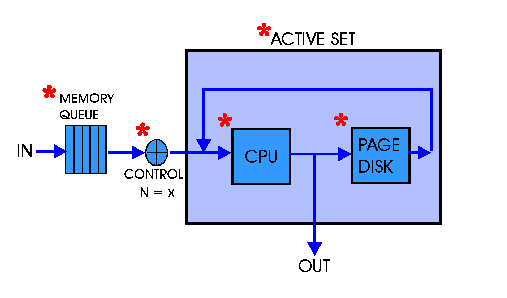Queueing Network Model


The queueing network model represents how a specific system configuration processes jobs. A series of devices in the system service the job before it is completed and removed from the system. When a job requires service from a particular device, it waits in a queue until the device is free. When a job has requested and received service from all necessary devices, it exits the system as a completed transaction [D4].
This diagram shows an example of a queueing network model. Review the details of the system component by clicking on the red stars.

Overall system performance can be evaluated by using parameters (service time,visit ratio, system load) of the system and its components to calculate performance measures, such as response time, throughput, and utilization. Analysis of the devices can determine their throughputs when they are operating at 100% of capacity. This is described as the saturation point of the device. The device with the lowest throughput at saturation will limit the throughput of the entire system, thus creating a bottleneck. When the system attempts to process jobs faster than the bottleneck device, system response time increases. [D4] and [M2]
Queueing network models vary in complexity based on the specifications of the system, how the system controls flow of transactions, and the service requirements of the transactions. These factors can also affect how perfomance measures are calculated.
For further information about measuring system performance with the
queueing network model, read articles [D4],
[D5], and [M2] and use the tutorial on Operating System Performance.
